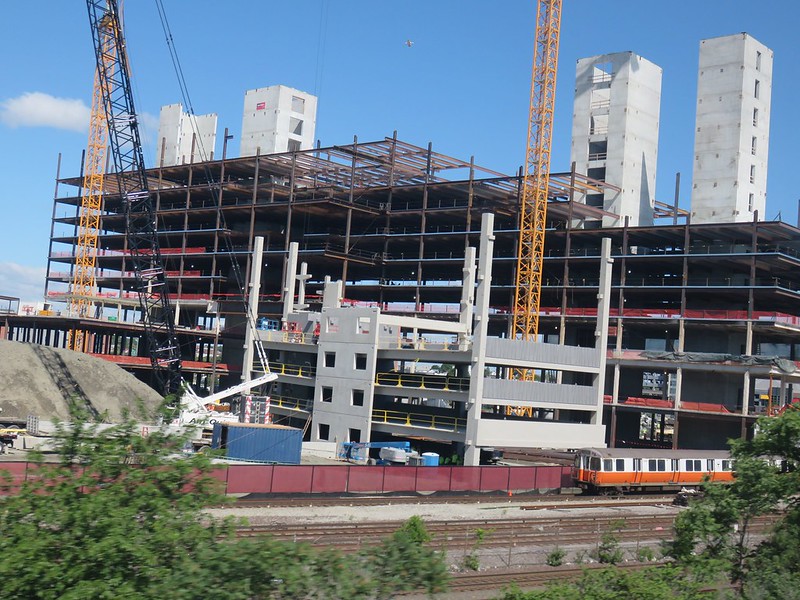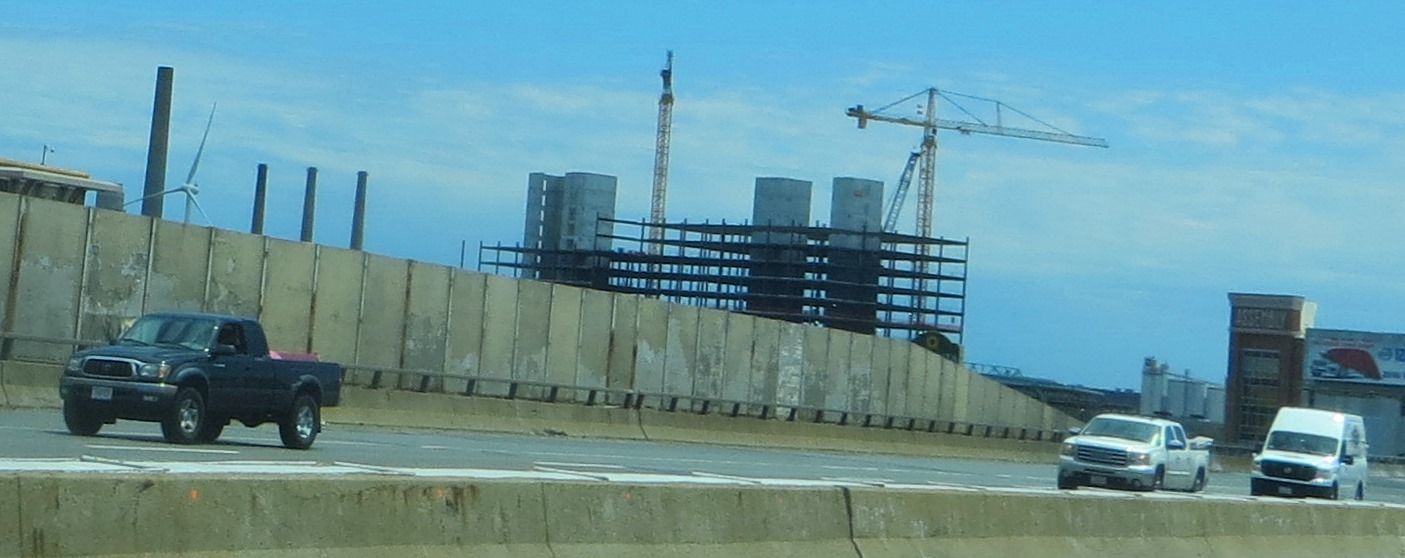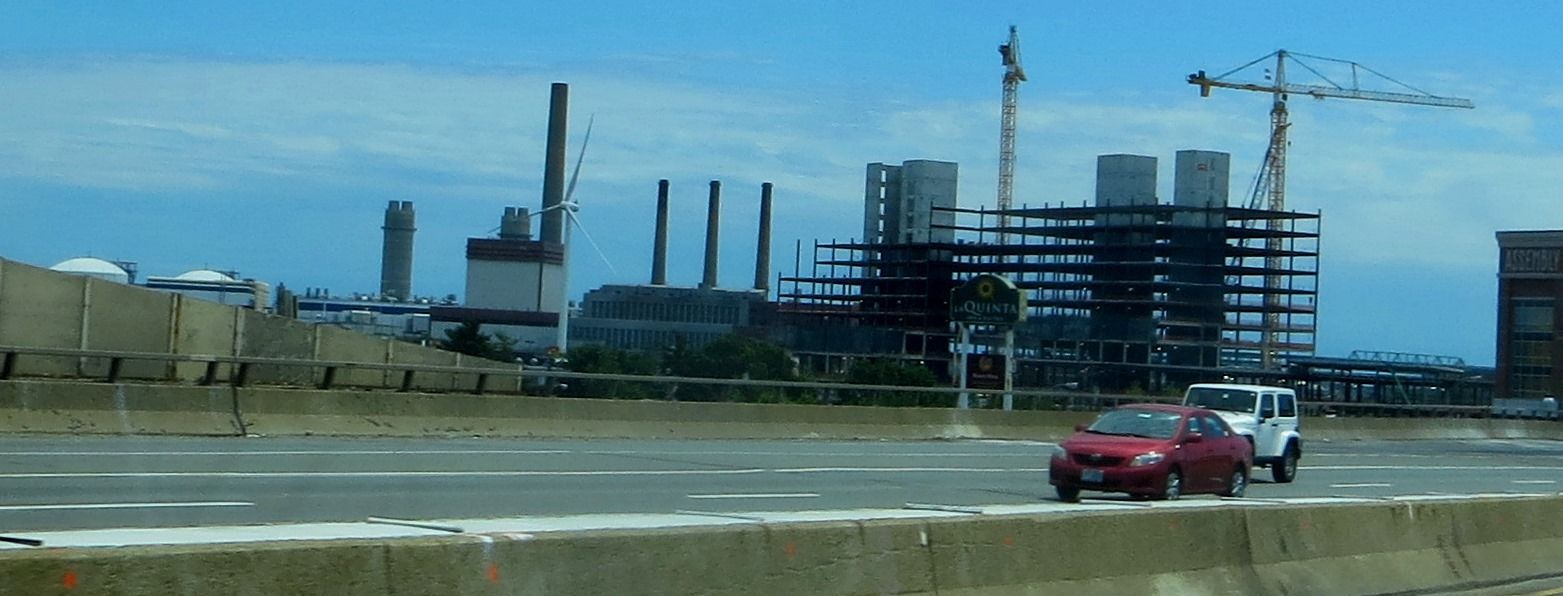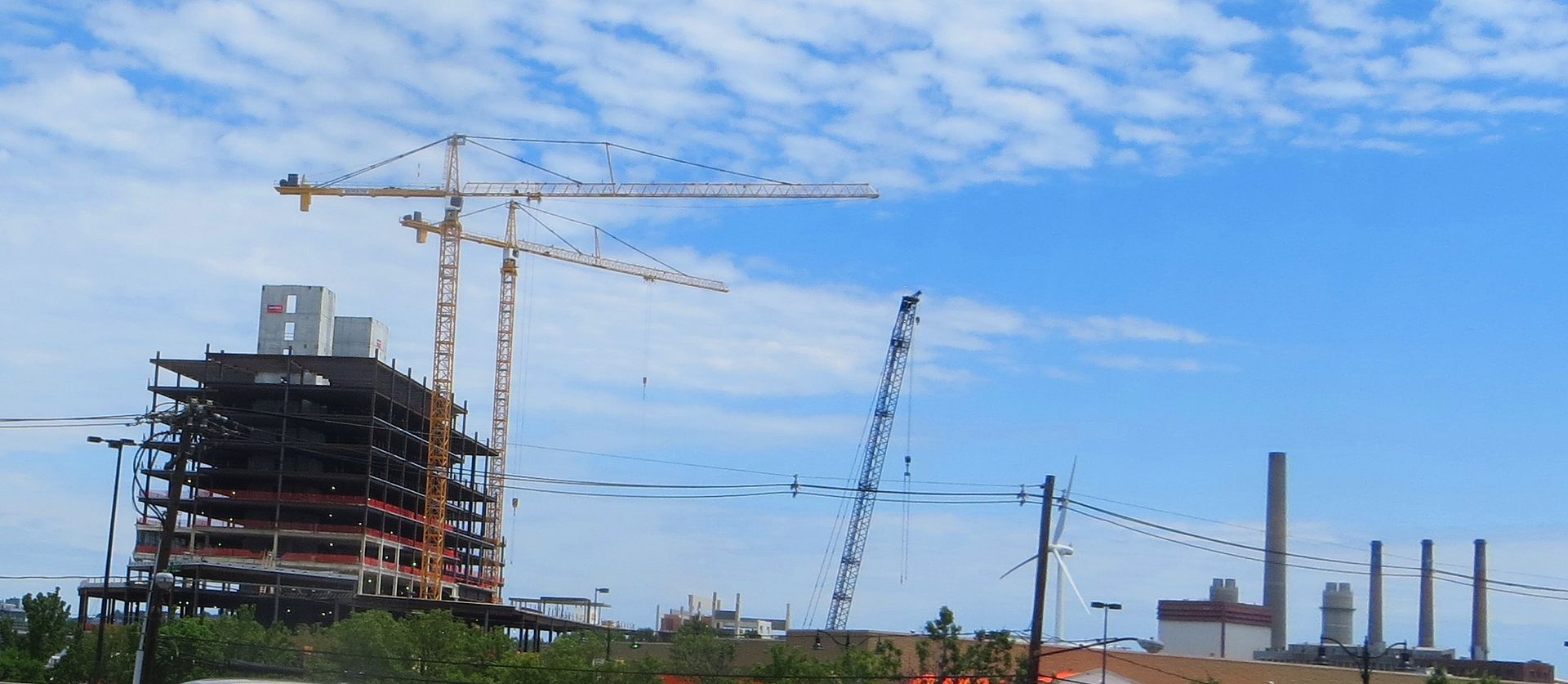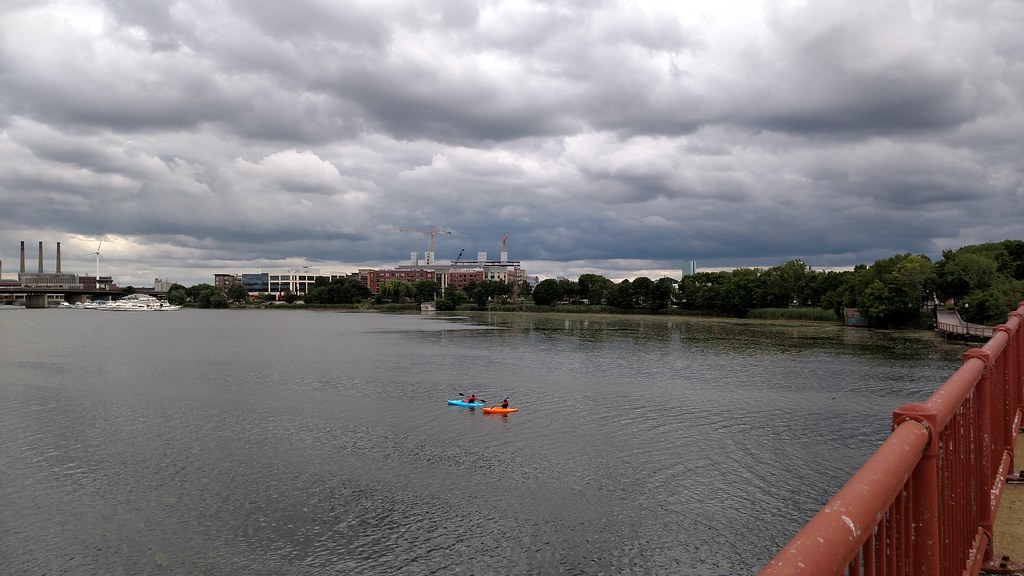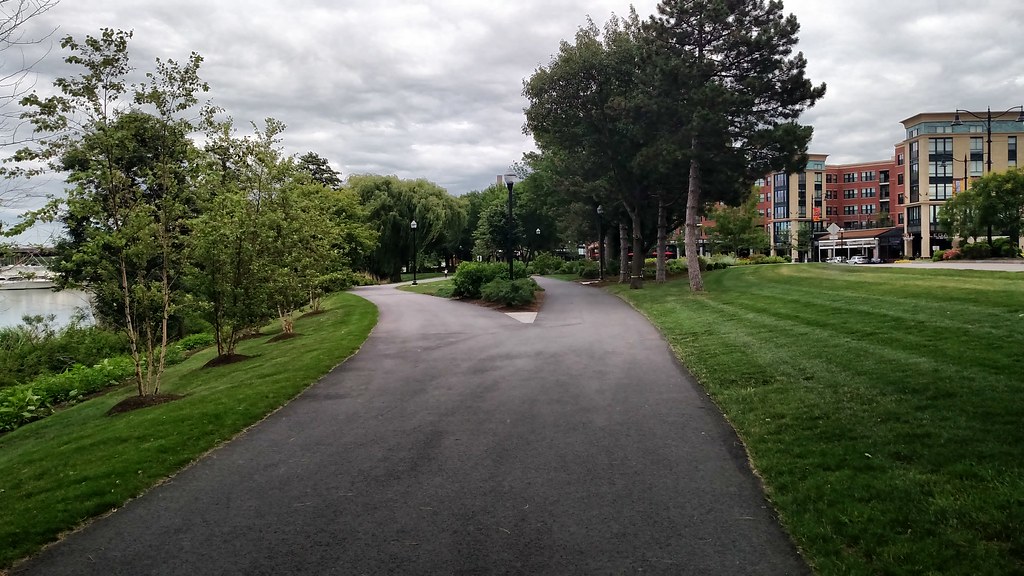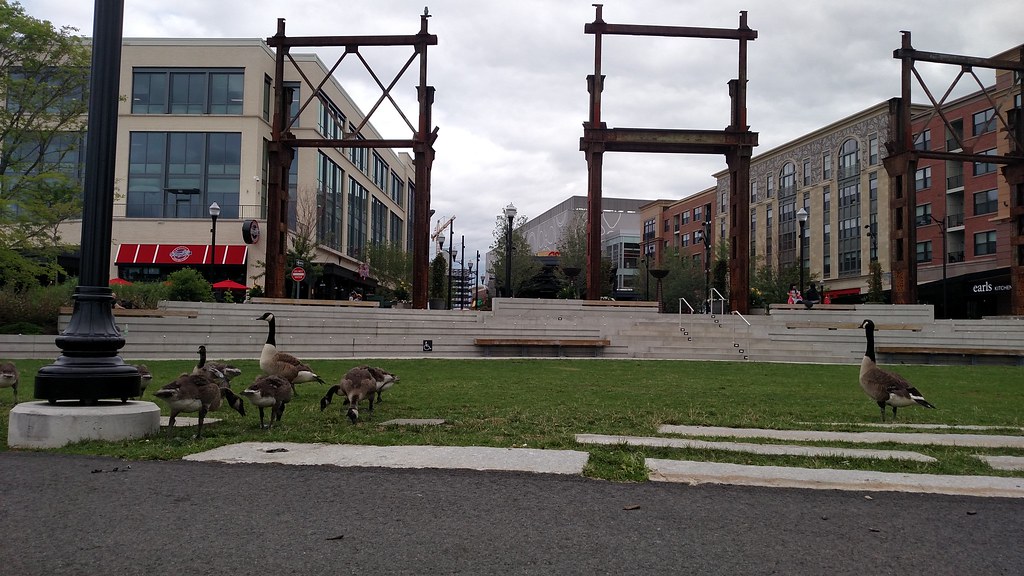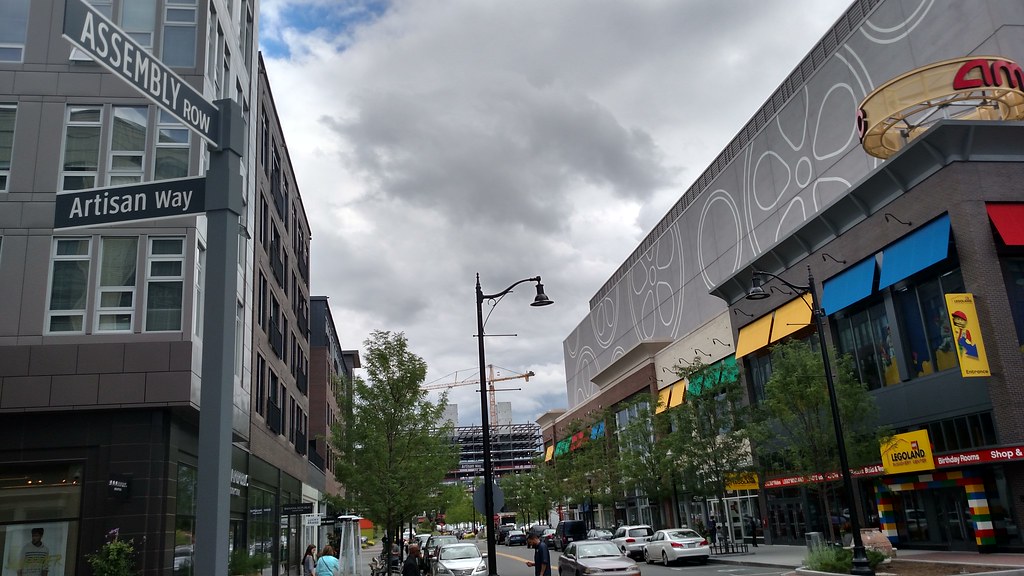Sorry but the whole thing is pretty much a strip mall and a caricature of urban design.
I disagree. The similarities to a strip mall are few (self-contained, retail oriented), but there are many key differences. I feel like I'm stating the obvious, but so many people keep calling this development a strip-mall that I feel like I need to point out how misguided this is.
Strip-malls generally have no residential component. This not only has a residential component, but a major, dense, urban residential component.
Strip-malls are usually single-story, single-use retail. These buildings have floors of urban residential above the retail.
Strip-malls have large, surface parking lots in front of the retail stores. This does not.
Strip malls have access, through a large parking lot, off of major roads/arteries. This is built on an urban grid of single-lane streets.
Strip malls are auto-centric. This development is pedestrian friendly and transit oriented.
Strip malls generally only have retail and service jobs. Sometimes there are small businesses, such as an accountant's office in a strip-mall, but usually nothing more than that. This is about to be the corporate home to a major healthcare company with hundreds of white-collar jobs in a transit-oriented, mid-rise office building.
etc, etc, etc.
Maybe calling this a strip-mall is an easy, insult (hey, there are stores and it's new! Just like those strip malls that line the major roads of Atlanta's suburbs!)
Fundamentally, though, this development is a well-executed, 21st century, transit-oriented urban neighborhood, concocted from scratch.
If this is not what people want (it is), then what do you want to be built on a brownfield next to a highway? Honestly, if this didn't exist and were proposed by an archBoston poster, everyone would drool and talk about how Boston is too conservative to ever let this amazing of a development take place.

